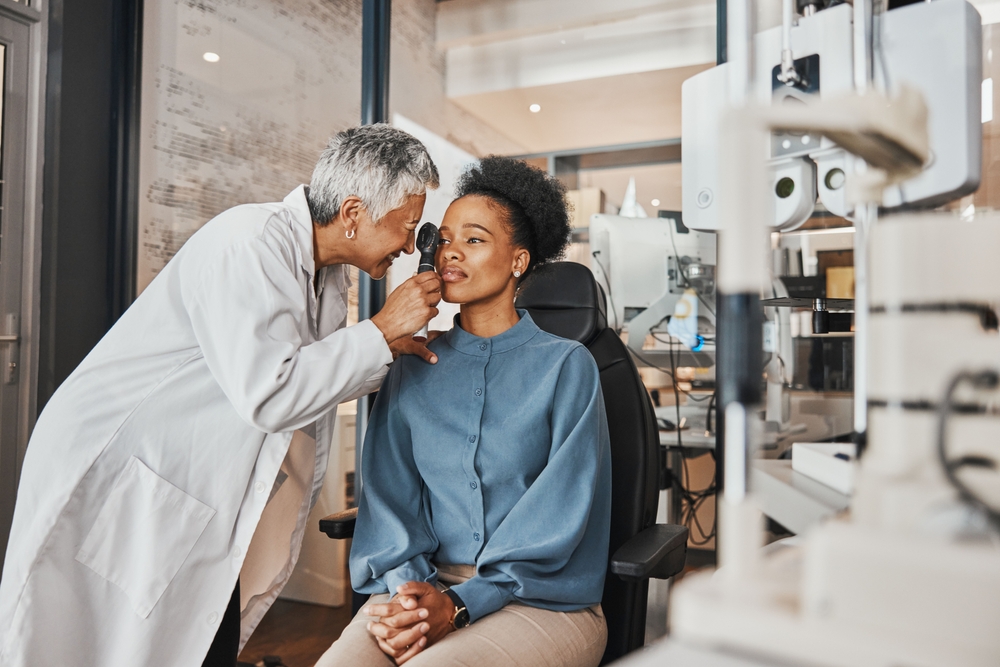How Often Should You Schedule Eye Exams?
August 7, 2024
Seeing your eye doctor regularly is just as important as seeing your primary care physician regularly. If you want healthy eyes, you need to have them examined to ensure you don't have any eye conditions.
If you're diagnosed with an eye condition, you must receive a timely diagnosis and treatment. Having an up-to-date prescription for wearing glasses or contact lenses is also important.
How often you need to schedule eye exams varies based on certain factors. Keep reading to discover why eye exams are important and how often you should schedule eye exams.
The Importance of Eye Exams
 Your eyes are some of the most critical organs in your body. Your eyes are the only way you can see the world around you.
Your eyes are some of the most critical organs in your body. Your eyes are the only way you can see the world around you.
Many people take their good eyesight for granted. However, even if you can see clearly, you can still develop an eye condition that can lead to vision loss and blindness. Your risk of losing your vision increases significantly as you age, and your risk of eye conditions increases.
Age-related eye conditions are prevalent. These conditions include cataracts, glaucoma, macular degeneration, and diabetic retinopathy.
The tricky thing about these conditions is that aside from cataracts, which you can treat with cataract surgery, vision loss from these eye conditions is permanent and irreversible. If you experience vision loss from them, they are permanent, and you cannot regain your vision.
Most conditions that cause vision loss have no cure. However, they can be managed and treated. Treatment helps to prevent and slow down the progression of further vision loss, protecting your remaining vision.
If you begin noticing symptoms that affect your vision, this is usually a sign that damage to your vision has already occurred. Eye exams are necessary because they are your best defense against age-related eye conditions that cause vision loss.
Eye exams ensure that if you have an eye condition causing damage to your vision, you can receive the necessary treatment to preserve your remaining vision. Many age-related eye conditions like macular degeneration and glaucoma can be detected in their early stages, allowing you to receive treatment before experiencing any apparent symptoms.
Your eye doctor at Maryland Eye Associates can look inside your eye during a dilated eye exam. They can also use imaging equipment to see early signs of damage to your lens, retina, and optic nerve.
Using imaging equipment and a dilated eye exam, they can determine if you have any eye conditions or if you're at risk of developing one before you experience vision loss. They can then recommend treatment to help you preserve your vision after diagnosis.
Eye exams can literally save your vision! But how often should you have them? That depends on your visual needs, age, and overall risk for developing eye conditions.
Eye Exam Frequency if You Wear Contact Lenses or Glasses
If you wear glasses or contact lenses, regardless of age, you should have an eye exam every year to ensure your prescription is up to date.
An out-of-date prescription leads to unnecessary eye strain, which can lead to fatigue, headaches, and other uncomfortable symptoms. If you have a high refractive error, you may also be at a higher risk of developing some eye conditions, so it's good to be screened more frequently.
Do you need an eye exam?
Eye Exam Frequency Based on Age
You should see an eye doctor regularly if you don't have a refractive error. When you're young, this means every year until you turn 18.
This is because children's eyesight is more susceptible to change. Many chronic eye conditions start presenting in childhood, including refractive errors and conditions like strabismus (crossed eyes) and amblyopia (lazy eye).
Early intervention and treatment for these conditions will give you the visual aid you need to thrive as you grow up. Between 18 and 39, if you can see clearly and at an otherwise low risk for developing eye conditions, you should still see your eye doctor every few years.
Talk to your eye doctor about establishing the appropriate eye exam schedule, as this can vary depending on your health, age, and family history of eye conditions. Once you turn 40, your risk of developing certain eye conditions increases, putting you at risk for conditions like cataracts.
You should start seeing an eye doctor at least every two years, regardless of your vision. Once you turn 55, you should start seeing an eye doctor once a year.
Your eye doctor may recommend seeing you more often, so ask them for their recommendations on your eye exam schedule, especially depending on your risk for developing eye conditions.
Understanding Your Risk for Eye Conditions
You're considered to be at a higher risk for many eye conditions the older you get. But other factors that put you at risk include:
- Diabetes
- High blood pressure
- High cholesterol
- Frequent UV exposure
- Tobacco use
- Family history of eye conditions
If any of these factors apply to you, you may need to have eye exams more regularly, even if you're younger than 55 or 40. Your eye doctor will be able to tell you exactly how often you need eye exams based on your risk.
The best way to keep your vision well into your later years is to have regular eye exams, even while you're still relatively young. Be aware of your risk, talk to your eye doctor, get your regular eye exams, and be vigilant about your eye health!
Are you ready to make your eyes a priority? Take the first step by making an appointment at Maryland Eye Associates in Prince Frederick, MD, today! You only get one set of eyes, so treat them right!



